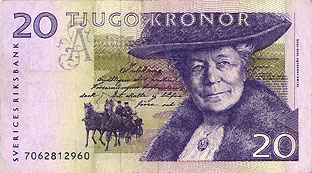
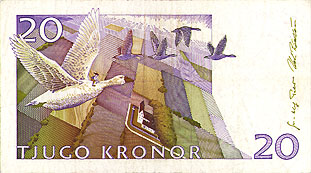
Selma Lagerlöf, a Nobel-prize (1909) winner writer.
From one of her books, “Nils Holgerson” on the back of the goose Akka.
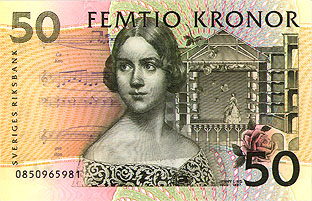
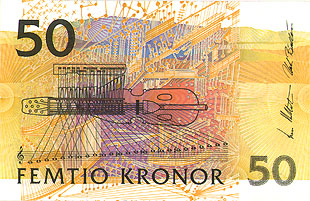
Jenny Lind, 1820–87, also called “the swedish nightingale”, a worldfamous soprano singer.
A old swedish folksong instrument: “Nyckelharpa”, roughly a violin remade into a hurdy-gurdy.
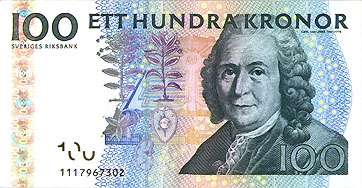

Carl von Linné, systematized the vegetables with their sex: “System naturae” (1735).
A bee and a flower doing it!
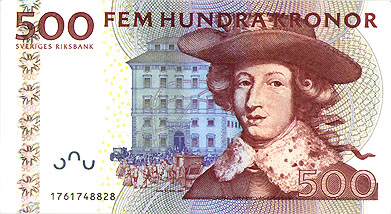
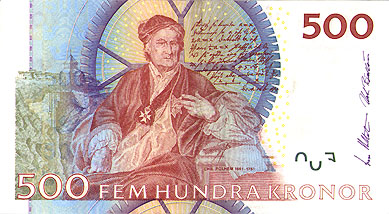
King Carl XI, 1655–97, swedish king 1660–97.
Christopher Polhem, 1661–1751, constructed machines for mining (see the chapter of Koppartorp), also clocks, locks and lock gates.
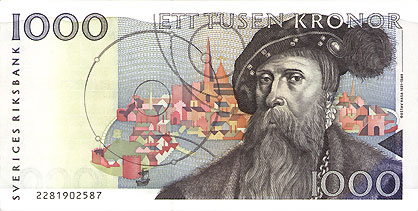
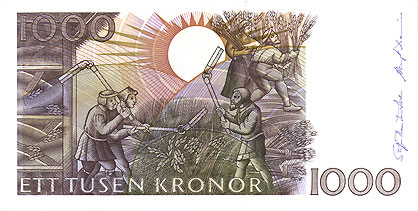
King Gustav Vasa 1496–1560, swedish king 1523–60. United Sweden and made it to a great power nation with tough methods, made Sweden to a hereditary kingdom and gained ascendancy over the Church.
Thresh of rye in the middle, harvest to the upper right.
Swedish paper money of today, front- and the backside. The 100 and 500 bill are the latest, they have on front to the very left a hologram (the strip, difficult to scan correctly) to make harder to forge (on top of the old methods: watermark, microtext, metalstring, invisible UV-coloured text etc).
mmTake away one nought and you have the value roughly in £ or $ or euro. Before we also had papermoney in 10 000 but they are of no use today when we have the plastic cards.
mmSwedish crown (SEK, SKr) are the eight biggest currency in the world though we are so few inhabitants (8.5 million). Sweden are the twentieth biggest economy (total GNP), we are the fourth best in GNP per capita, and the fifteenth biggest exporter in the world though we are so many times fewer than every else country. (On the Human Development Index ranking that measures economy, health, education etc we are second best.)
mmIn the autumn of 2003 Swedes shall vote for if we shall join the European monetary union, if it was only a matter of design you easily see that our papermoney of today easily outperforms the euro!